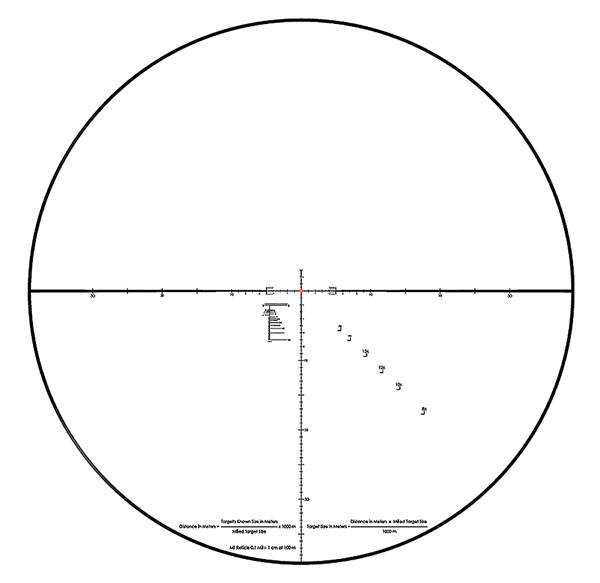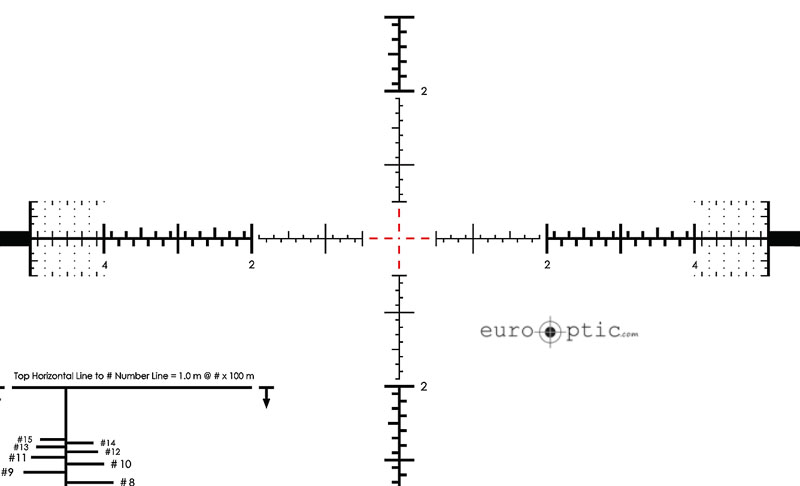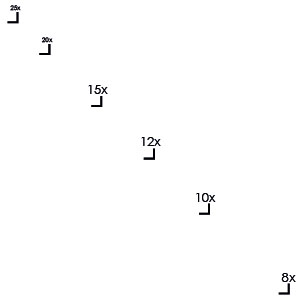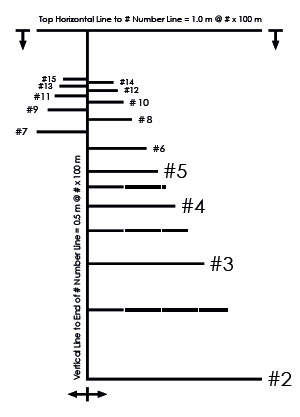Update 7/9/2018 - reticle images!





==========================
Scheduled for release in the May/June 2017 timeframe, Schmidt Bender's new LRR-Mil milliradian-based intelligent reticle will be out very soon - and we're all pretty excited to be spearheading the distribution of this new technology. Designed with the Tactical Precision Shooter in mind, the LRR-Mil was designed with feedback and consultation from proven operators from multiple countries to be a major evolution in reticles with aiming and ranging capabilities. Uncluttered, easy to reference, and a step up from current reticle technology.
The LRR-Mil reticle will be offered in the four following Schmidt Bender PM II models:

Components
1. Main Reticle
The main reticle component of the LRR-Mil contains 0.1, 0.2, and 0.5 milliradian references throughout the entire structure of the reticle. It is illuminated, with the center dot and interrupted center cross portions being subject to the red illumination. The center dot is ultra-fine, covering only 0.16 cm at 100 meters.


The horizontal reticle lines in the 3 o'clock and 9 o'clock positions are thick, bold, conical line segments for fast center acquisition; they also feature reference marks at different intervals.
The 6 o'clock reference line is fully referenced on a 0.5 mil basis, and referenced in 0.1 and 0.2 mils out to the 2.0 mil mark; the 12 o'clock reference line extends upward from the center dot for 3.0 milliradians of reference.
2. Power Identification Indicator
The LRR-Mil features power identification markings in the lower right-hand quadrant of the reticle. This interesting and unique addition to the reticle allows the operator to instantly reference the current magnification setting of the scope without the need to pull away from the riflescope. The magnification setting is reference by comparing the number closest to the edge of the field of view of the scope.

3. Meter/Half-Meter Ranging Scale
In the lower left-hand quadrant of the LRR-Mil reticle, a 200 to 1,500 meter and half-meter ranging scale is featured. This ranging scale also features a short usage note right in the reticle to eliminate confusion.

In this scale, the operator simply lines the target up with the top vertical line (for 1-meter targets) or the middle horizontal line (for half-meter targets), and judges to which horizontal numbered line (1-meter targets) or end of numbered line (1/2 half-meter targets) to which the target extends to find the estimated range of the target. Again, simple, clean and efficient. And I'm sure I'm not the only one who appreciates the usage instructions right in the reticle...
4. Fine Graduated Ranging/Estimating Box
The horizontal lines of the LRR-Mil feature a Fine Graduated Ranging and Estimation box that begins at the 4.0 Mil mark and extending to the 5.0 Mil mark, on both sides. This section of the reticle has 0.1 and 0.2 milliradian reference marks for ranging very small or very distant targets.

Takeaways
As you can see, the Schmidt Bender LRR-Mil reticle is a pretty exciting new development. For additional reference material and some other new Schmidt Bender announcements, check out the Schmidt Bender New for 2017 document.